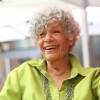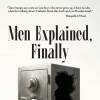This week, Jared Bowen interviews two photographers who capture images of protest and activism. Plus, an original duet from the Boston Symphony Orchestra titled “Listen, to the Cry of Your Fellow Man,” a unique collaboration of horn and harp.
Activist photographers OJ Slaughter and Philip Keith document the history of right now with their cameras

Two local photographers are documenting Boston area protests from a considerably more intimate perspective and point of view than traditional journalists. Philip Keith is a Providence-based photographer whose work has been featured in publications such as Bloomberg, Businessweek, The Guardian, and Rolling Stone. Boston photographer OJ Slaughter has been taking portraits and fashion photos since 2011, but has now turned their attention to grassroots organizing and photographing activism. Both artists have been on the ground at protests from Boston to Washington D.C., photographing marches for justice and equality, particularly within the Black Lives Matter movement. At Windy Films in East Boston, some of Slaughter’s work is currently on the walls for a gallery event titled “The History of Right Now.”
“I think a lot about how in middle school, high school, college… I didn't see a lot of people that looked like me and that looked like my community,” says Slaughter. “I really wanted to challenge that idea of what our future history looks like.”
“Listen, to the Cry of Your Fellow Man,” a new duet presented online by Boston Symphony Orchestra through November 19

Two local musicians have collaborated to create an original song that is now streaming on the Boston Symphony Orchestra website. “Listen, to the Cry of Your Fellow Man” is a duet for horn and harp written and performed by BSO Associate Principal Horn Richard Sebring and his friend, one-time student and former Tanglewood Music Center Fellow Charles Overton. Sebring said he was inspired to write the piece after the killing of George Floyd, when he realized music was the only way he could communicate his feelings. He then shared the piece with Overton, who improvised his response on harp.
“When [Sebring] sent this example of him playing the horn… I was just like, ‘wow, this is the first thing I've heard in all of this that just is so clearly from the heart,’” he says. “I'm excited to make some music again, to make some sound, to lean into these feelings in a musical way.”
Jared talked with Morning Edition host Joe Mathieu about this interesting collaboration.
Have issues of social and racial justice driven you to create art? Tell Jared about it on Facebook or Twitter!




